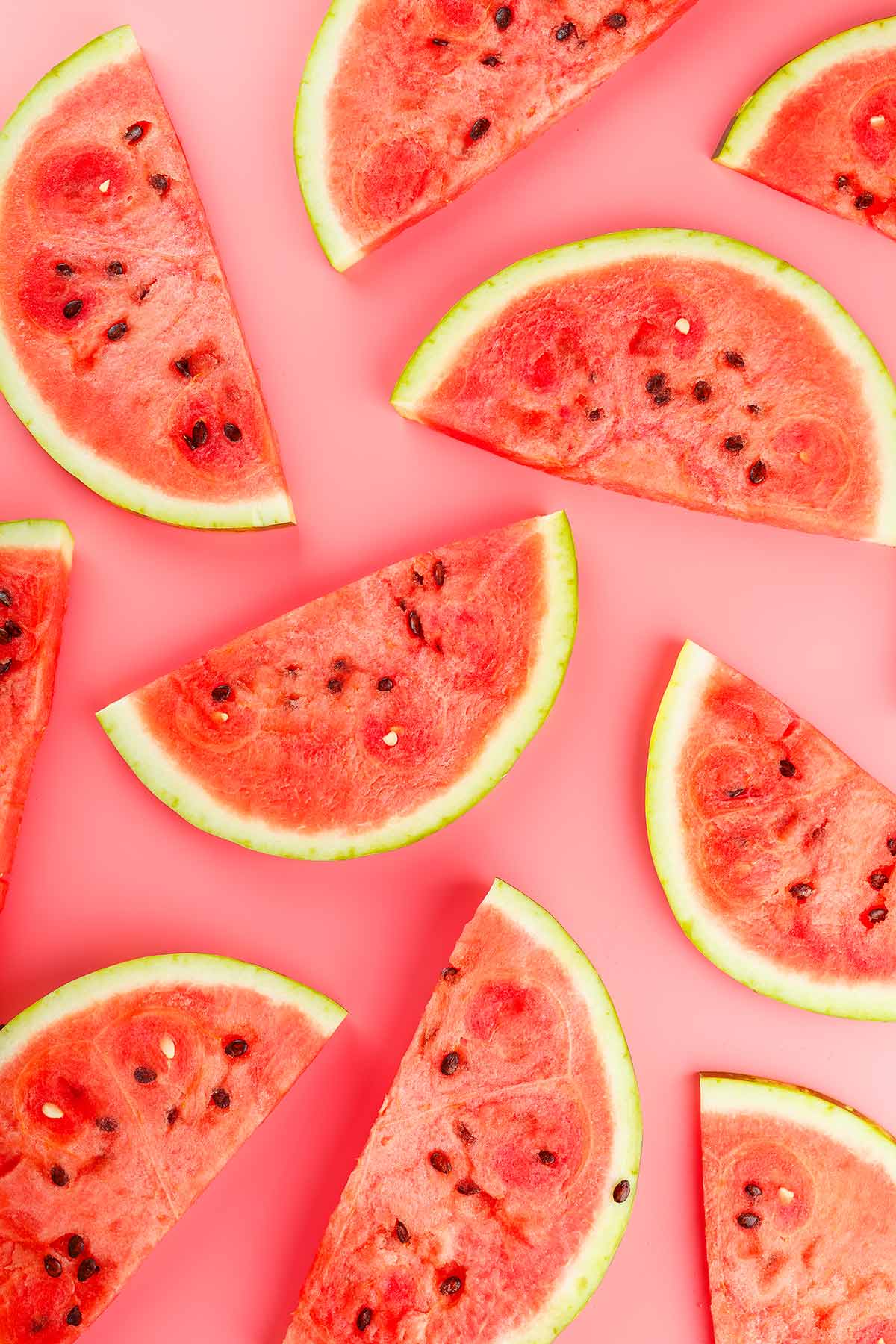
David explains his 6-step approach to how to tell if a watermelon is the ripest, juiciest, sweetest watermelon possible. Works like a charm each and every darn time.
Watermelon, one of summer’s cool, shivery treats, can be a blast or a bust. You know that feeling when you expect sweetness but instead get a ho-hum mouthful of watery nothingness.
Here are six tips on how to select a watermelon that’s perfectly ripe.
1. Pick it up
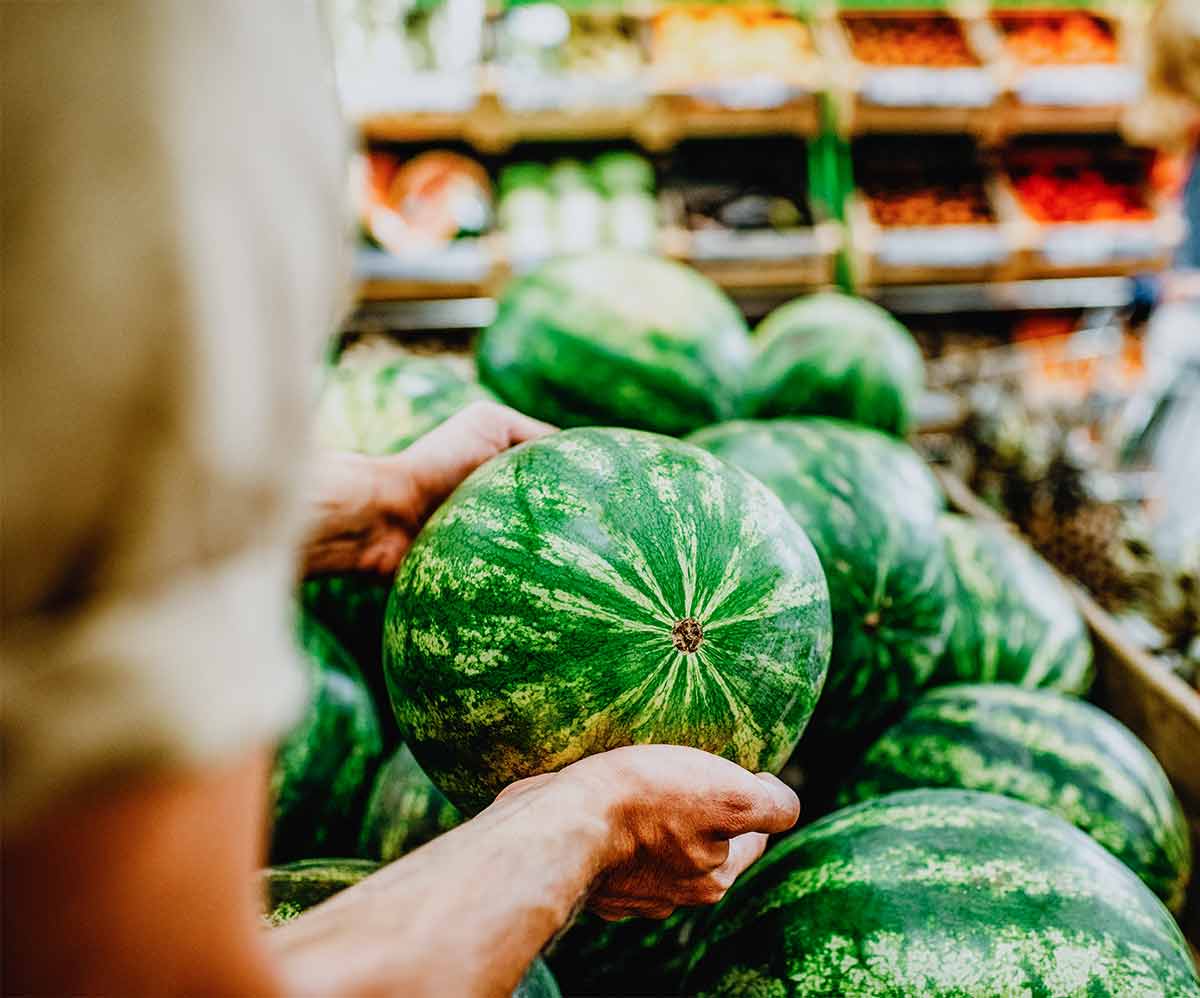
A ripe watermelon should feel heavy for its size. And heavy is a good thing. (As a man of portly proportions, I love being able to write that!) So, when shopping, always choose the heavier of two same-size melons.
2. Look for the yellow spot
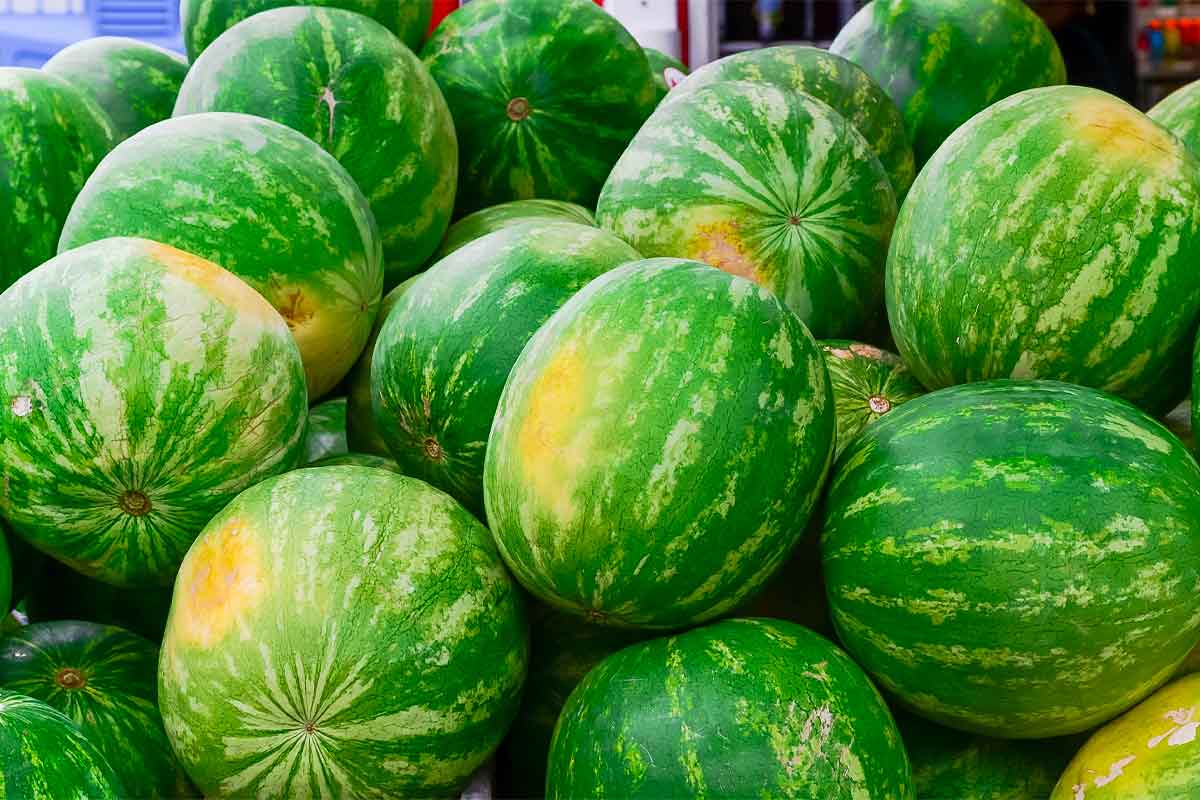
Since watermelons grow on the ground, the spot where they’re in contact with the earth gets no light–hence no green color. That area is called the “field spot” and is probably the best indicator of ripeness and sweetness. Look for a spot that’s yellow in color, which means it’s been ripening on the vine for a long time. A light-colored or white spot means the melon was picked too early. And too early means a fruit that’s fakakta.
3. Give it a good spanking
Okay, you can settle for a good rap with your knuckles. A ripe watermelon will feel sturdy and have a resonant, satisfying hollow sound. That means it’s bursting with watermelon juiciness and is at its peak of ripeness. If the thwap is dull sounding or the fruit feels soft, pass on it.
4. Look for a uniform shape
We here at LC embrace the irregularities of food and life. We welcome misfit veggies and adore ugly fruit. But, sorry, not when it comes to watermelon. We go for cover-model shapes. If your melon is bumpy or has ridges, it’s most likely the recipient of inconsistent love from nature–meaning it was alternately neglected and smothered in sun or water. And you don’t need a melon with emotional baggage.
5. Find the sugar spot
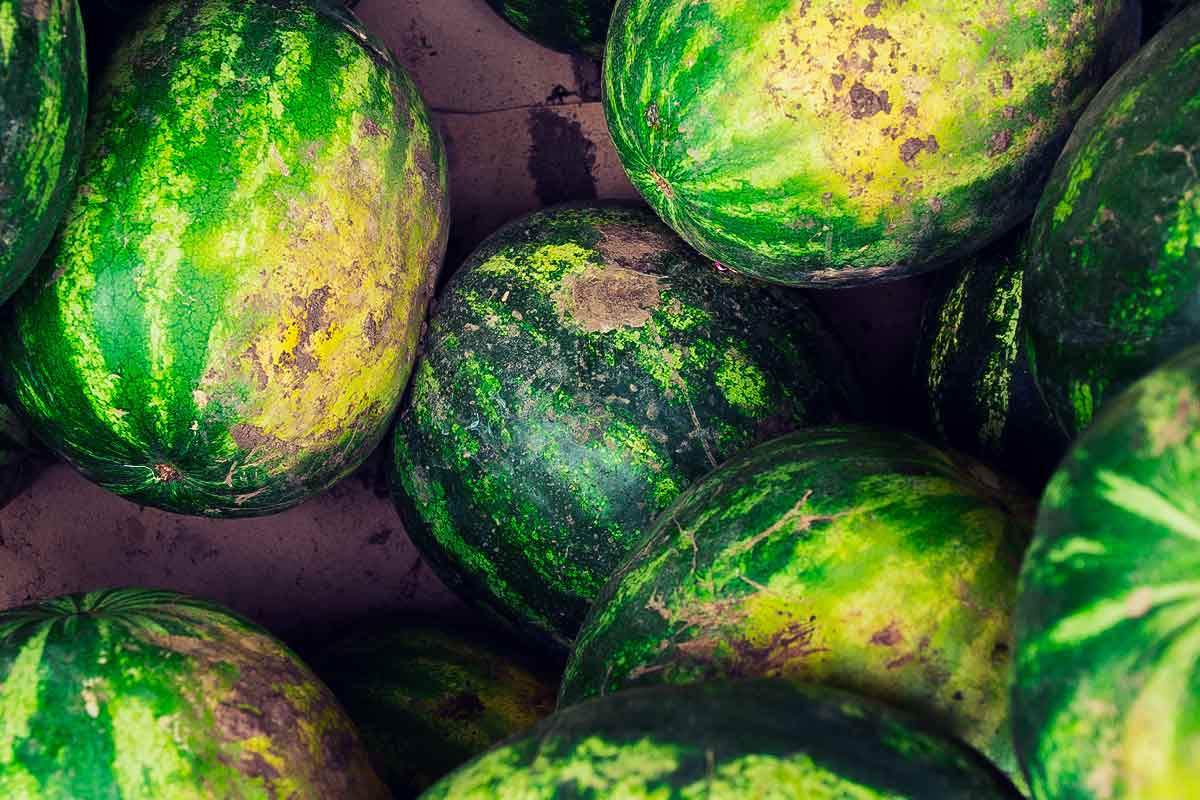
No, this isn’t the title of some pop song with explicit lyrics. The sugar spot is a dark brown rough patch, or webbing, that looks almost like dirt. This is where the sugar is seeping out of the fruit. Sugar=sweetness. Sweetness=a good time had by all.
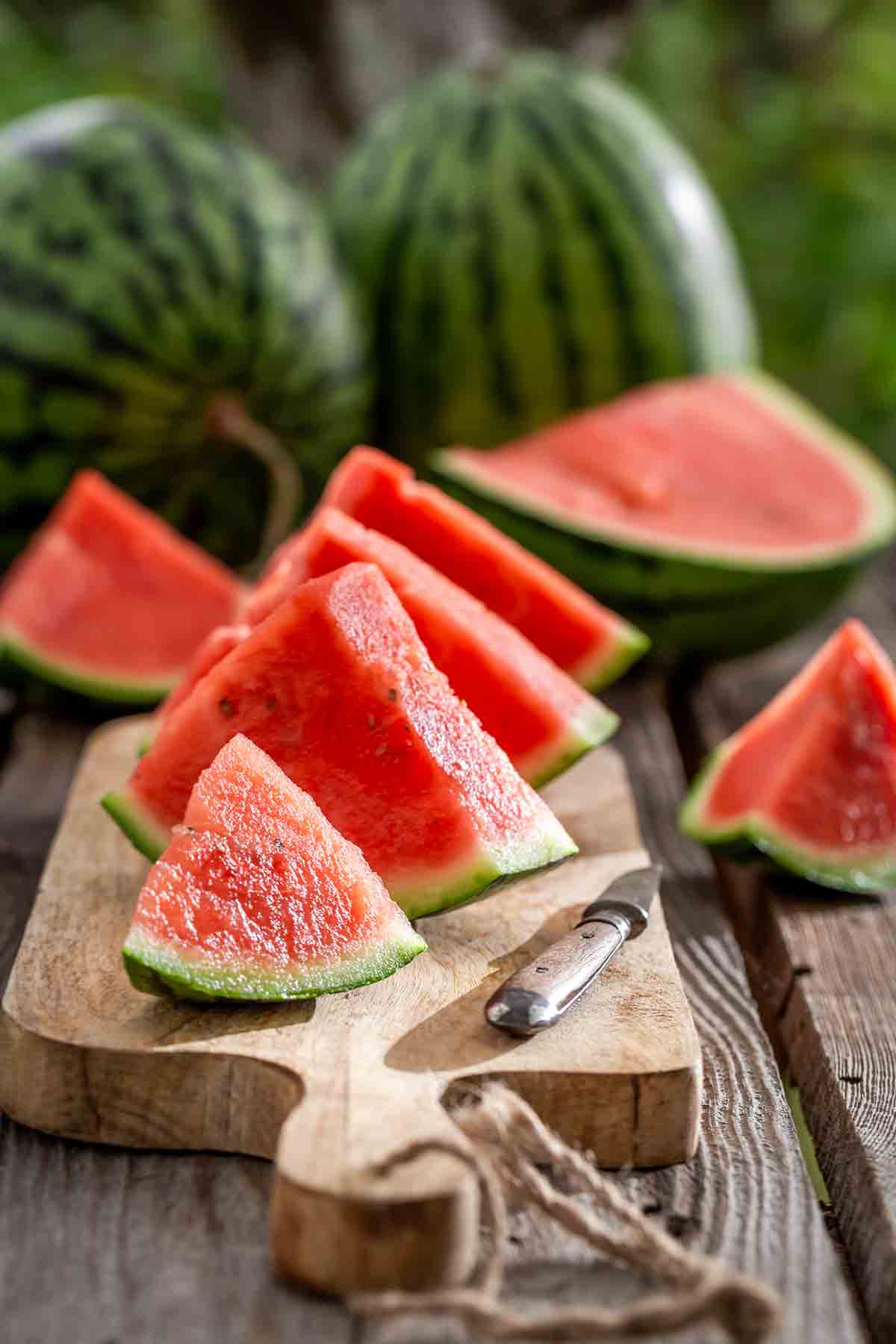
6. Go for dull
A shiny, dewy complexion ain’t for watermelon. A mature, has-seen-the-garden melon has a dull surface…and it’s what lies below that lackluster surface that counts. Sweetness.

And now . . .
One of summer’s simplest rituals is eating watermelon out of hand (and, if you’re a kid, spitting the seeds at your brother). But have you ever considered watermelon with a sprinkle of sea salt? The cool of watermelon spiked with the heat of Aleppo pepper? Or juxtaposed with salty feta and tangy cherry tomatoes? Or rubbed with the cut side of fresh ginger? Or even tossed on the grill—yes, we’re telling you to heat watermelon. Just brush both sides with a wee bit of olive and place it on the grill for a few minutes to take the edge off its crispness. And, of course, you can always churn it into sorbet.
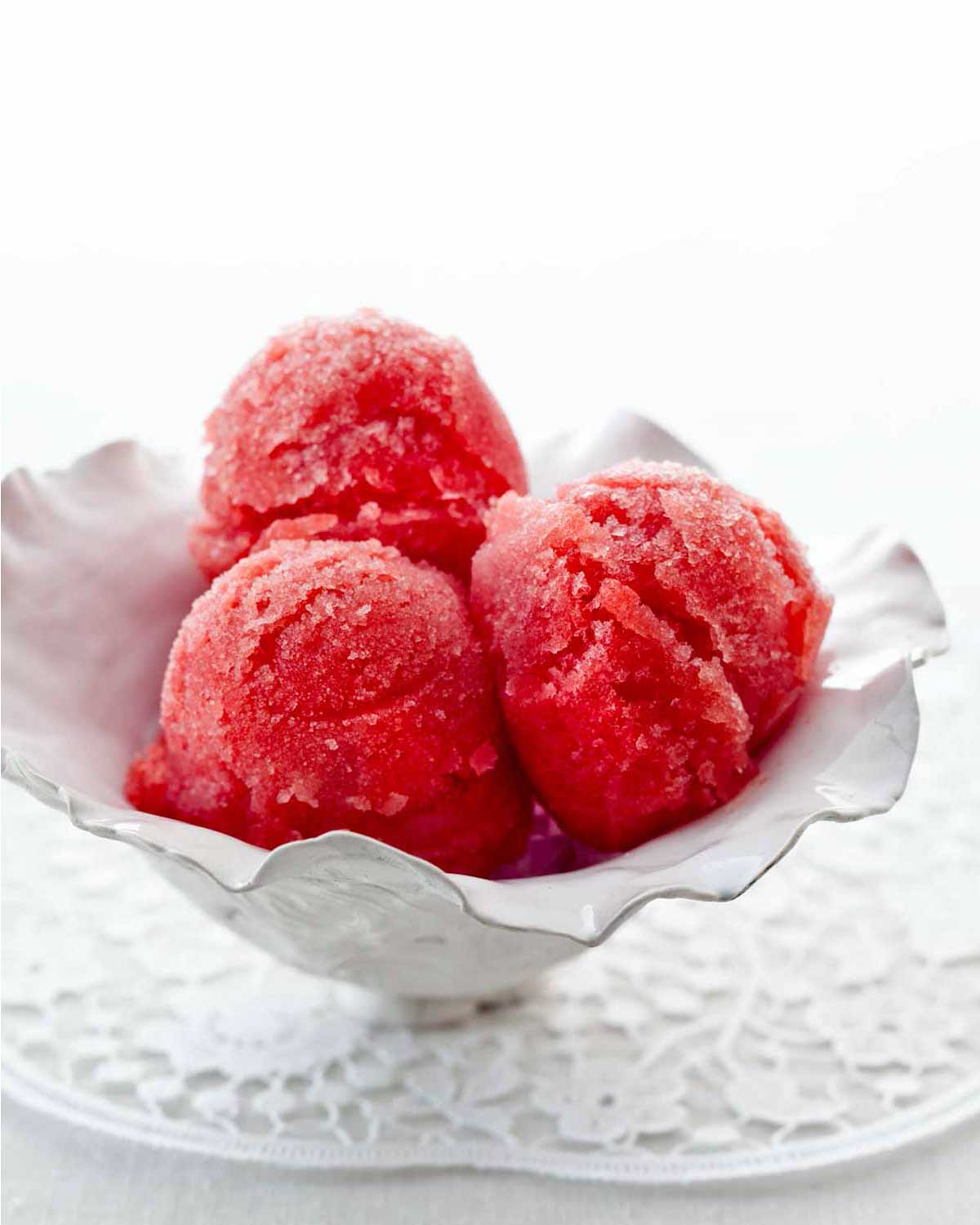
So now you have superpowers. Go, now, dear fruit lover, and be the Master of Your Own Watermelon-verse.

Originally published August 8, 2020


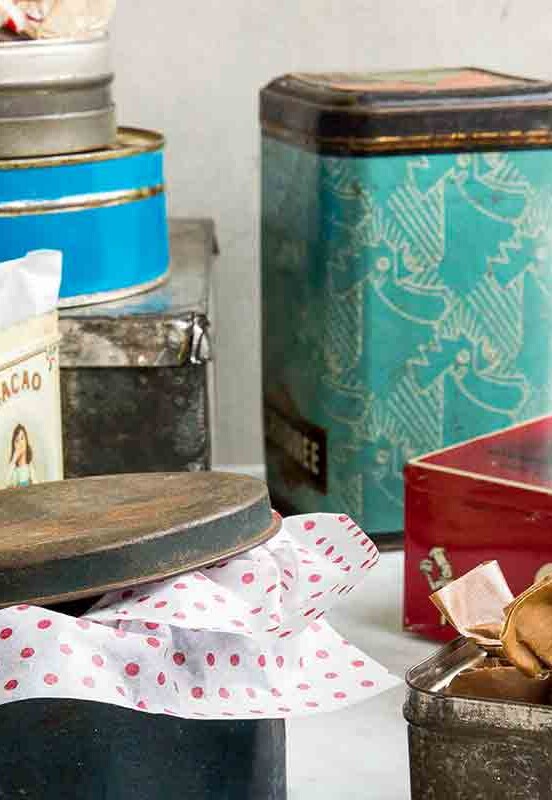










Watermelon aguas frescas
1/4 of a 20lb seedless watermelon
2 cups water
Juice of 1/2 lemon
Remove the green and white rind from watermelon. Dice up the red into chunks, put in a blender (this will be about 5cups chopped watermelon). Add 1cup water to blender. Purée for 2-3 minutes.
Add 1 cup water to blender
Pour mixture through sieve into large bowl
Add juice of 1/2 lemon into pitcher
Pour in the watermelon juice
Garnish with small pieces of watermelon
Serve chilled
Makes 6 cups
Thanks, Lisette!
Enjoyed your lovely writing style, fakakta & all. The watermelon delivered to me is heavy, organic, has a lovely yellow spot with a little brown, however, the sound in some places is hollow, other areas are more of a thud. I hope it’s scrumptious!
Ess, my kinde, gezuntiheit!
Danke, Ginger! And let me know how the watermelon tastes.
fakakta? too perfect, david.
thanks for all these tips.
i’ve been craving local watermelon and when it arrives, i will be armed and ready.
toss watermelon in your blender.
such a refreshing healthy drink and super hydrating on hot days.
jude! You are more than welcome. Thanks for the drink suggestion! Happy watermelon hunting!